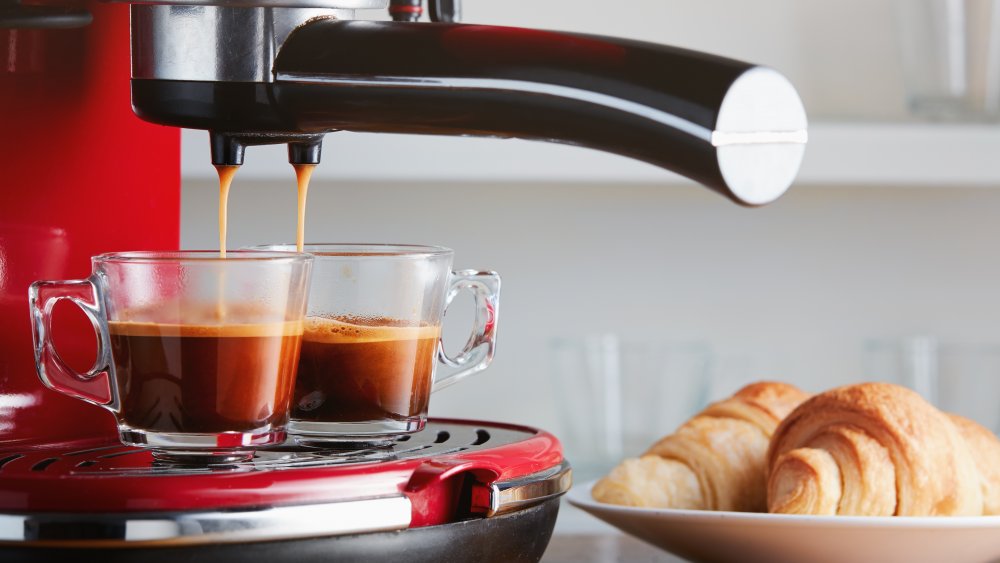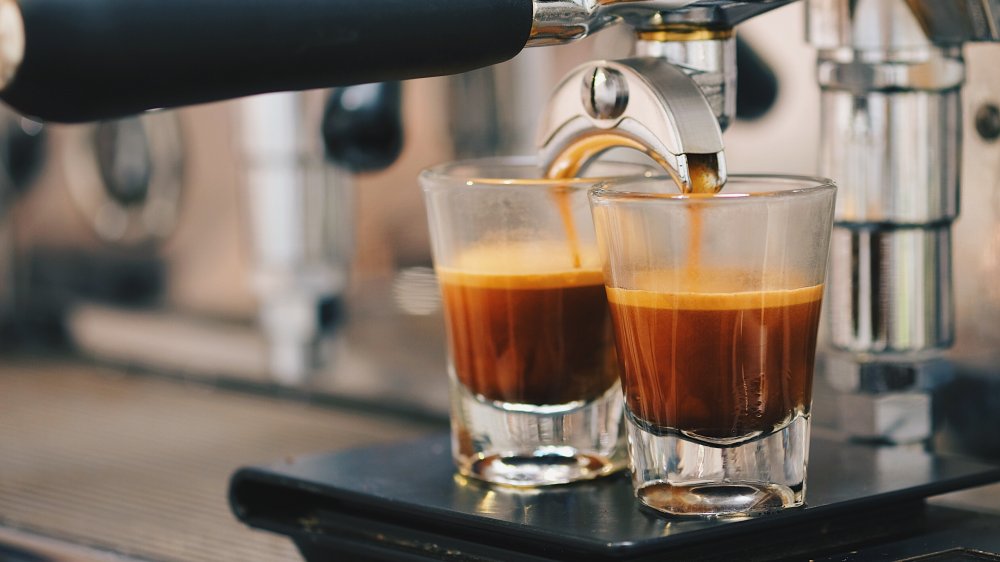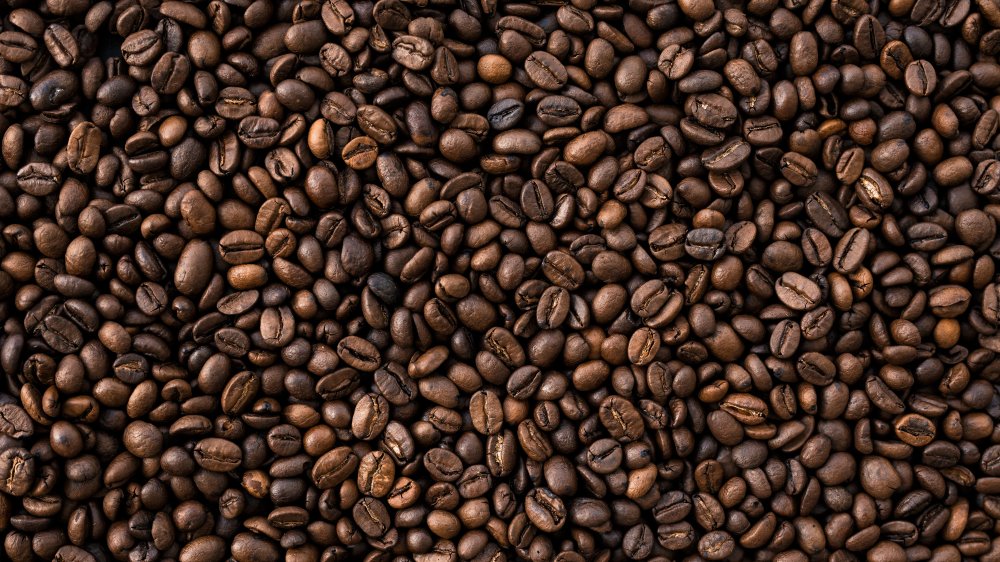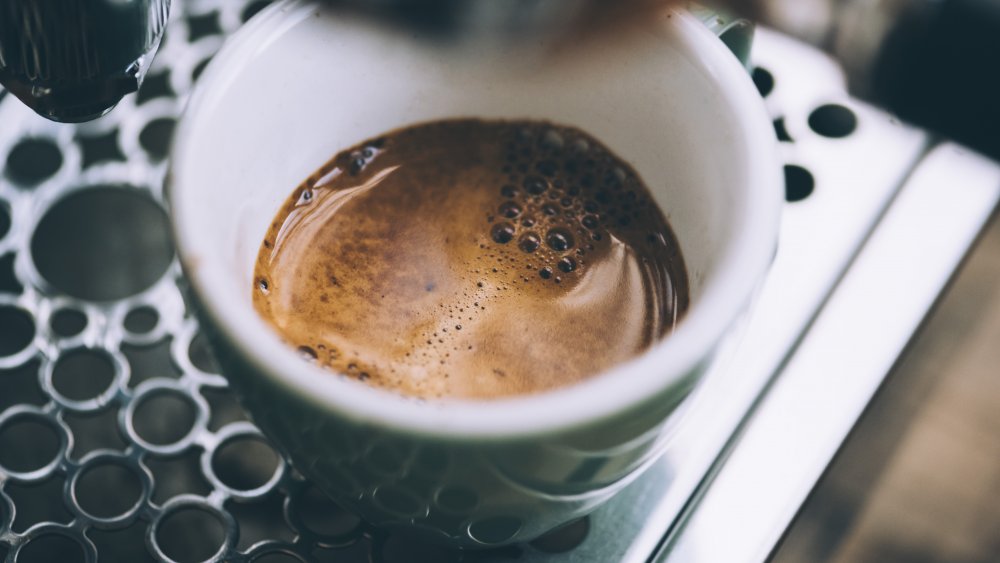The Real Reason Espresso Servings Are So Small
In Italy, espresso is a component of everyday life. You can sip it whenever: in the afternoon, as you stand idly at a coffee bar, or at night, as you wrap up a long dinner. Italian coffee is to be sipped on the spot — so, ordering coffee to-go in the birthplace of espresso isn't usually an option (via Food & Wine).
Of course, nothing screams "espresso" like the small, delicate mug in which the coffee is served. Why? Why is espresso served so sparingly, and in such an adorable vessel?
You might think you know the answer: a shot of espresso has more caffeine than a cup of coffee, right? Wrong. As NPR reported a few years ago, an espresso shot actually has less caffeine than your average mug of drip coffee.
Espresso vs. drip coffee
If you've ever peeked beyond the long lines at your favorite fancy coffee house, you may have noticed that espresso is prepared differently than drip coffee. Espresso is brewed through a combination of hot water and immense pressure, according to The Kitchn.
If you're making espresso, the coffee beans must be ground into a fine powder — none of the grainy, gritty stuff you dump into your drip machine. Then, the finely ground espresso beans must be compressed into a small, compact clump. The combination of fine grinding and physical pressure allows for a flavorful cup of espresso. In other words, it's not simply "strong coffee," but a different method of preparation altogether.
Getting your caffeine fix
A typical serving size of espresso — one ounce — contains about 64 mg of caffeine, according to Mayo Clinic. A typical serving size of brewed coffee — 8 ounces — contains 96 mg of caffeine. So while espresso is inherently stronger, the single shot you order from your friendly local barista is probably not as strong as the more American cup of coffee — especially once you start ordering 12-ounce and 16-ounce cups of joe to prepare for your Monday mornings.
So why is espresso served in such a small quantity?
Espresso is literally pressed coffee. It's thicker and contains less water than a cup of drip coffee. Drinking 8 or 12 ounces of it is blatantly unhealthy, according to the Mayo Clinic.
Even if espresso isn't as caffeinated as you might think, it's still a lot of flavor and caffeine packed into a small serving. That's why coffee shops, in the states and in Italy, will commonly serve a small glass of still or sparkling water alongside the espresso: it's a palate cleanser (via Culture Trip).
Watch for crema
There's also the issue of crema: the lovely layer of foam that forms over the espresso. Crema is a sign of freshly ground beans, and it locks in the espresso's aromas, according to Business Insider. You want to see it decorate the top of your espresso. Choosing a large, wide cup can cause that crema to dissolve, according to Espresso Machine Experts.
So, the importance of crema is another reason the small cup is so perfect for espresso, as if the cup is too big — such as a typical coffee mug — this creama disappears quickly because it spreads out and becomes too thin.
Honestly, when you're going for espresso, you want to see authenticity, and getting espresso served in a small cup is the way to go.



